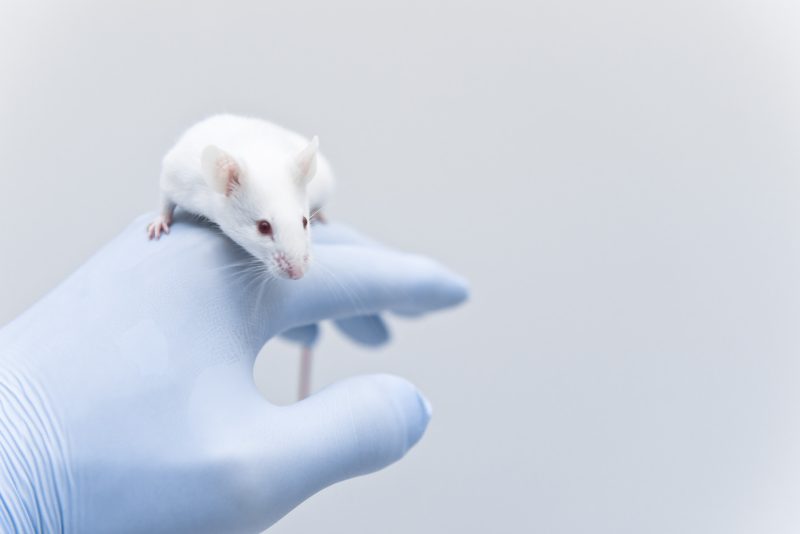Small Molecule ISRIB Found to Reduce Scarring in Mouse Models

Scientists have found a small molecule, called ISRIB, that was able to reduce fibrosis (scarring) and other disease-related features in mice with induced pulmonary fibrosis (PF).
ISRIB successfully enhanced the repair process in lung cells that is altered in PF, especially in older mice. According to investigators, these findings support further development of ISRIB as an alternative strategy to treat the condition, which occurs mainly in older people.
The findings were reported in a study, “Resetting proteostasis with ISRIB promotes epithelial differentiation to attenuate pulmonary fibrosis,” published in the journal PNAS.
In PF, the lungs become damaged and scarred, gradually losing their function. While current therapies can ease symptoms and slow lung function decline, there are none that are able to halt disease progression. Additional treatment options include oxygen therapy and lung transplant.
“Currently, therapeutic options for patients with pulmonary fibrosis are limited to lung transplantation and two drugs with modest efficacy and severe side effects, so new drugs that could slow down progression or revert pulmonary fibrosis are much needed,” Alexander Misharin, MD, PhD, of Northwestern University’s division of pulmonary and critical care and a study co-author, said in a press release.
A significant risk factor in PF development is advanced age. Multiple processes, including cell aging — called senescence — altered function of energy-producing mitochondria, and stem cell exhaustion have been implicated in age-related PF susceptibility. However, scientists’ understanding of the underlying molecular mechanisms is still incomplete.
To learn more, Misharin and his colleagues at Northwestern and other institutions triggered lung fibrosis in young adult mice (3–5 months old) and old mice (ages 18–24 months, or 1.5–2 years). The team administered the toxic agents bleomycin and asbestos to induce such scarring. Then, they tested the impact of a molecule called ISRIB, which has shown promise as a therapeutic agent against inflammation, cancer, and neurocognitive diseases.
The results showed that older mice treated with bleomycin developed more severe fibrosis than younger mice, as shown by worse lung compliance — less ability to expand — and elevated collagen levels. Collagen is a protein produced by fibroblasts that contributes to tissue scarring. Collagen levels and body weight returned to near-normal levels in younger mice, but increased collagen levels persisted in older animals and their body weight remained low. The investigators confirmed these results using asbestos as a fibrosis trigger.
Studies have shown that the recruitment of immune cells drives the development of bleomycin- and asbestos-induced lung fibrosis. The team found immune cells called macrophages were increased in the lungs of older mice, as compared with younger mice, following either bleomycin or asbestos treatment.
Next, both young and old mice were treated with ISRIB (or a vehicle), starting seven days after bleomycin treatment, up until day 28. In both groups of animals, treatment with ISRIB resulted in higher lung compliance, lower collagen levels, and fewer signs of fibrosis. Treatment in healthy mice — both old and young — did not affect body weight, lung compliance, or collagen levels.
The researchers then tested the effects of ISRIB in young and old animals with non-resolving fibrosis triggered by asbestos. In both young adult and older mice, treatment with ISRIB reduced fibrosis and lowered collagen levels in the lungs. Further, young adult ISRIB-treated mice recovered body weight faster than vehicle-treated control animals.
“Together, these data suggest that ISRIB ameliorates lung fibrosis in both young adult and old mice in both resolving and nonresolving models of pulmonary fibrosis,” the team wrote.
An additional experiment showed that treatment with ISRIB before and seven days after exposure to bleomycin was able to reduce scarring, improve lung compliance, and decrease collagen levels in both cases.
ISRIB also lowered the recruitment or blocked factors required to maintain immune macrophages during bleomycin-induced fibrosis in both young and old mice.
Finally, the team focused on epithelial cells that line the lungs’ tiny air sacks, known as alveoli. Type 1 epithelial cells (AT1) are flat and responsible for gas exchange between the lungs and the bloodstream, whereas type 2 cells (AT2) are cubed-shaped and produce a surfactant liquid that helps to keep the alveoli moist. Damage to the alveolar epithelium is repaired by the growth of AT2 cells followed by their transformation, or differentiation, into AT1 cells.
“They act as makeshift stem cells,” Misharin said.
While these epithelial cells can complete this transformation in younger animals, in older mice the process can stall, leaving the injury to remain unresolved.
To assess the effects of ISRIB in this transition process, the investigators exposed young adult mice to bleomycin and then treated them with ISRIB seven days later. Three days after treatment, AT1 and AT2 cells were harvested and analyzed.
Compared with vehicle-treated animals, the number of AT1 cells increased in ISRIB-treated mice, suggesting that “ISRIB enhances the differentiation of AT2 into AT1 cells.”
“These cells reshape and change everything they do; it’s like moving into a different country and starting a new job, which can be very stressful,” Misharin said.
“This drug can help them complete this transition,” he said.
The investigators said ISRIB “shows promise as part of a combined strategy … to treat pulmonary fibrosis.”
“In conclusion, we show that ISRIB … can attenuate resolving fibrosis induced by bleomycin and nonresolving fibrosis induced by asbestos fibers in both young adult and old mice,” the team wrote, adding that “ISRIB in part promotes epithelial repair after injury.”







